Iridium sheds more light on direct-to-smartphone plan
Friday, 21 October 2022 20:04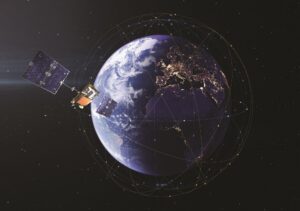
Initial direct-to-smartphone services from Iridium’s constellation will support occasional communications for emergencies and other unforeseen needs in remote areas worldwide, CEO Matt Desch said Oct. 20.
The post Iridium sheds more light on direct-to-smartphone plan appeared first on SpaceNews.
Designing the trajectory of microsatellite swarms from the macro-micro perspective
Friday, 21 October 2022 15:34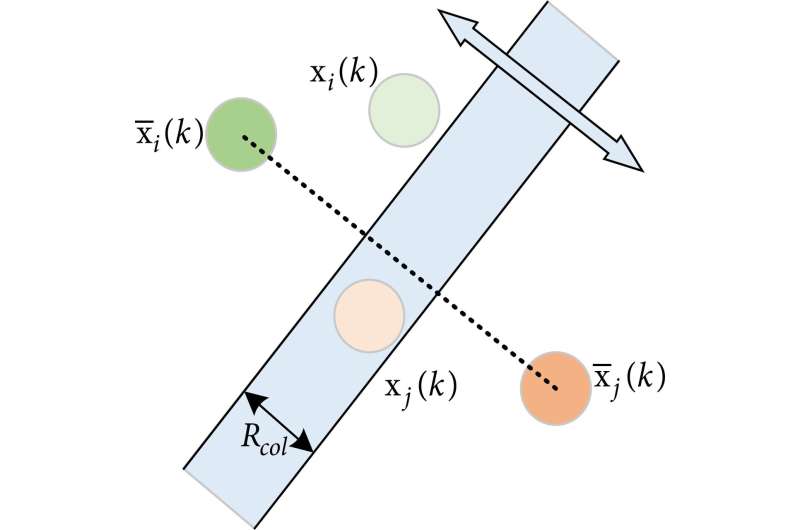
As an emerging multi-satellite cooperative flight mode, the microsatellite swarm has become an important future research issue for distributed space systems. It offers low cost, rapid response, and collaborative decision-making. To address the coordination of swarms for autonomous agents, a probabilistic guidance approach has been investigated, which contained sub-swarms with different mission objectives.
Probabilistic swarm guidance enables autonomous microsatellites to generate their individual trajectories independently so that the entire swarm converges to the desired distribution shape. However, it is essential to avoid crowding for reducing the possibility of collisions between microsatellites, which adds challenges to the design of the collision avoidance algorithm.
In a research paper recently published in Space: Science & Technology, Bing Xiao, from School of Automation, Northwestern Polytechnical University, proposed a Centroidal Voronoi tessellation (CVT) and Model Predictive Control (MPC) based synthesis method, aiming to achieve macro-micro trajectory optimization of a microsatellite swarm.
Scientists discover the source of one of the rarest groups of meteorites
Friday, 21 October 2022 12:33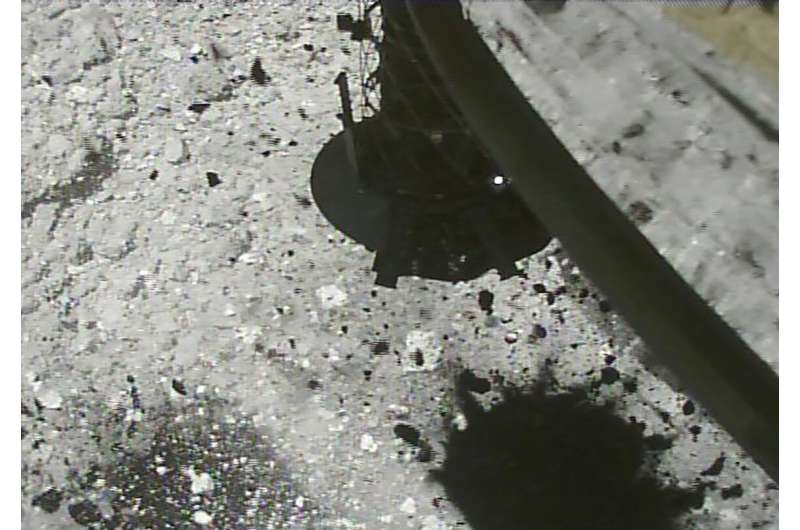
Since return mission Hayabusa2 brought samples of asteroid Ryugu back to Earth in 2020, a team of experts from across the world have been examining them to learn more about the origins of our solar system.
Carbonaceous chondrites, such as the Winchcombe meteorite which fell to Earth and was retrieved in Gloucestershire in 2021, are an extremely rare group of meteorites which have been known to contain organics and amino acids—ingredients for life. They are the most primitive and pristine materials of the solar system and can provide unique information on where water and the building blocks of life were formed, and what planets are made from.
Ryugu returned
In this study, published Oct. 20 in the journal Science Advances, the team conclude that Ryugu, now a near-Earth object, was among the group of asteroids known as the Cb-type which formed billions of kilometers away from Earth, toward the edge of the sun's influence, in a region of space such as the Kuiper Belt, or perhaps even deeper into space.
Professor Sara Russell, A senior research lead at the museum who co-authored the paper, says, "It's only within the last decade we've begun to appreciate just how far objects in the solar system can move towards, and away from, the sun.
Week in images: 17-21 October 2022
Friday, 21 October 2022 12:12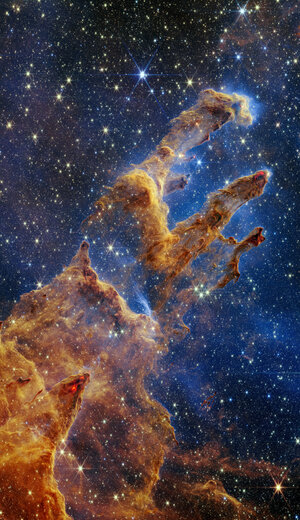
Week in images: 17-21 October 2022
Discover our week through the lens
OneWeb launch sign of greater role for India in commercial launch market
Friday, 21 October 2022 10:53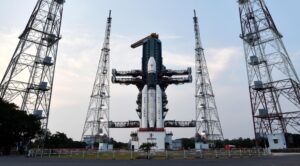
The launch of a set of OneWeb satellites on an Indian rocket could be the harbinger of a greater role India will play in a commercial launch industry straining to satisfy demand.
The post OneWeb launch sign of greater role for India in commercial launch market appeared first on SpaceNews.
Grasp acquires AirPhoton to form Grasp Global
Friday, 21 October 2022 10:00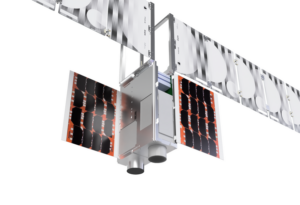
French startup Grasp SAS has acquired Baltimore, Maryland-based AirPhoton to create Grasp Global, a U.S. Earth-observation company.
The post Grasp acquires AirPhoton to form Grasp Global appeared first on SpaceNews.
ESA finalizes package for ministerial
Friday, 21 October 2022 09:36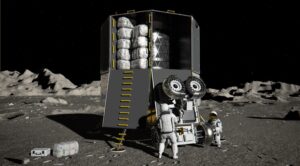
ESA is putting the finishing touches on a package of programs it will ask its member states to support at a council meeting in November.
The post ESA finalizes package for ministerial appeared first on SpaceNews.
Virgin Orbit and Luxembourg sign agreement to advance allied responsive space capabilities across Europe
Friday, 21 October 2022 08:50 Virgin Orbit (Nasdaq: VORB) and the Luxembourg Minister of Defence has signed a Letter of Intent that will begin the process towards developing responsive space capabilities inclusive of mobile launch infrastructure that would be based in Luxembourg, but available for NATO partners, and other Allies across the European continent. As part of the agreement, Virgin Orbit, in close coordination with
Virgin Orbit (Nasdaq: VORB) and the Luxembourg Minister of Defence has signed a Letter of Intent that will begin the process towards developing responsive space capabilities inclusive of mobile launch infrastructure that would be based in Luxembourg, but available for NATO partners, and other Allies across the European continent. As part of the agreement, Virgin Orbit, in close coordination with NASA readies Superstack for upcoming JPSS-2 launch
Friday, 21 October 2022 08:50 Two very different payloads flying on one rocket are ready for their ride to space. Creating an integrated stack that stands 25 feet tall, the National Oceanic and Atmospheric Administration's (NOAA) Joint Polar Satellite System-2 (JPSS-2) and NASA's Low-Earth Orbit Flight Test of an Inflatable Decelerator (LOFTID) spacecraft are safely secured inside the United Launch Alliance (ULA) Atlas V roc
Two very different payloads flying on one rocket are ready for their ride to space. Creating an integrated stack that stands 25 feet tall, the National Oceanic and Atmospheric Administration's (NOAA) Joint Polar Satellite System-2 (JPSS-2) and NASA's Low-Earth Orbit Flight Test of an Inflatable Decelerator (LOFTID) spacecraft are safely secured inside the United Launch Alliance (ULA) Atlas V roc NGC delivers first GEM 63XL solid rocket boosters to support Vulcan first flight
Friday, 21 October 2022 08:50 Northrop Grumman has delivered the first two 63-inch-diameter extended length Graphite Epoxy Motors (GEM 63XL) to Cape Canaveral Space Force Station, Florida.
The solid rocket boosters will support the inaugural flight of United Launch Alliance's (ULA) Vulcan Centaur rocket planned for first quarter 2023. At approximately 72-feet-long, and weighing over 117,000 pounds, the GEM 63XL is the
Northrop Grumman has delivered the first two 63-inch-diameter extended length Graphite Epoxy Motors (GEM 63XL) to Cape Canaveral Space Force Station, Florida.
The solid rocket boosters will support the inaugural flight of United Launch Alliance's (ULA) Vulcan Centaur rocket planned for first quarter 2023. At approximately 72-feet-long, and weighing over 117,000 pounds, the GEM 63XL is the New Site, New Sights, New Science: Sols 3628-3629
Friday, 21 October 2022 08:50 For the first time in a little while we're at a new location after a drive in the last plan, which means new targets for the Geo team to investigate, and slightly different viewsheds for ENV to work with. Power was a bit tight, especially for the first sol with two hours of science time, a drive, and arm activities. Still, we managed to pack in lots of targeted science before driving away.
For the first time in a little while we're at a new location after a drive in the last plan, which means new targets for the Geo team to investigate, and slightly different viewsheds for ENV to work with. Power was a bit tight, especially for the first sol with two hours of science time, a drive, and arm activities. Still, we managed to pack in lots of targeted science before driving away. Arecibo Observatory-led Team discovers large near-earth asteroid has changing rotation
Friday, 21 October 2022 08:50 Ateam of scientists led by Arecibo Observatory and the University of Central Florida has measured a change in the rotation period of the potentially hazardous near-Earth asteroid 3200 Phaethon, a future spacecraft target.
Phaethon is just the 11th asteroid with a measured change in its rotation period, and it is the largest of them.
The discovery is an example of progress in global e
Ateam of scientists led by Arecibo Observatory and the University of Central Florida has measured a change in the rotation period of the potentially hazardous near-Earth asteroid 3200 Phaethon, a future spacecraft target.
Phaethon is just the 11th asteroid with a measured change in its rotation period, and it is the largest of them.
The discovery is an example of progress in global e To explore space means defying dust
Friday, 21 October 2022 07:02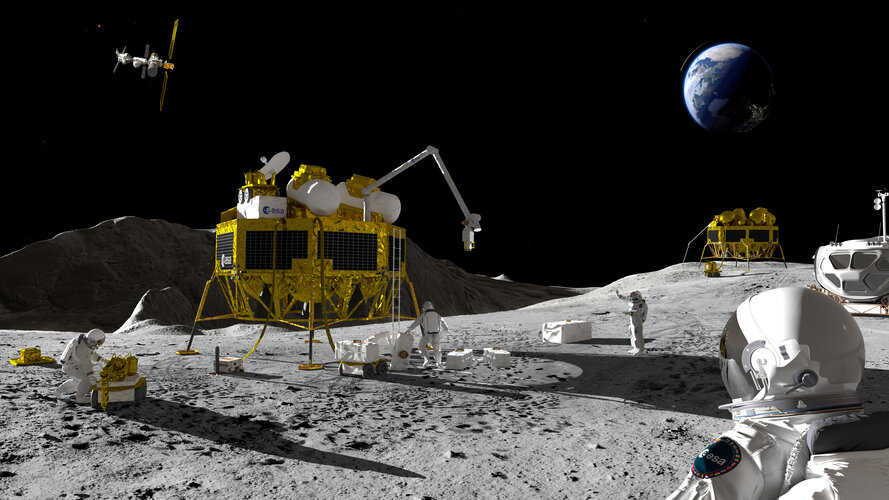
As the world’s space agencies prepare to return to the Moon and explore the planets, space materials engineers have been getting to grips with a challenging enemy: dust. The abrasive, talcum-like dust enshrouding the Moon and other planetary surfaces can obscure surfaces, wear away at coatings and clog space mechanisms.
Earth from Space: Inhambane Bay, Mozambique
Friday, 21 October 2022 07:00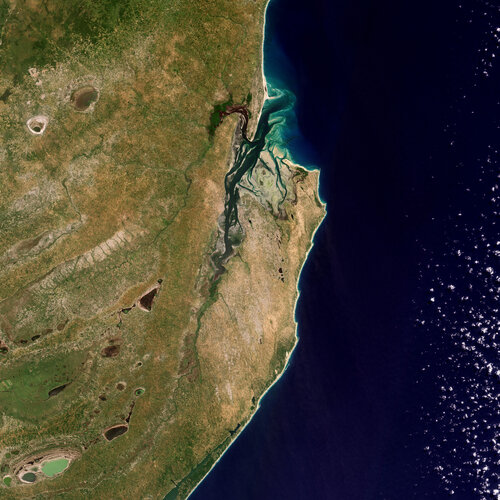
Inhambane Bay, in southeast Mozambique, is featured in this true-colour image captured by the Copernicus Sentinel-2 mission.
ESA spacecraft catch the brightest ever gamma-ray burst
Friday, 21 October 2022 06:30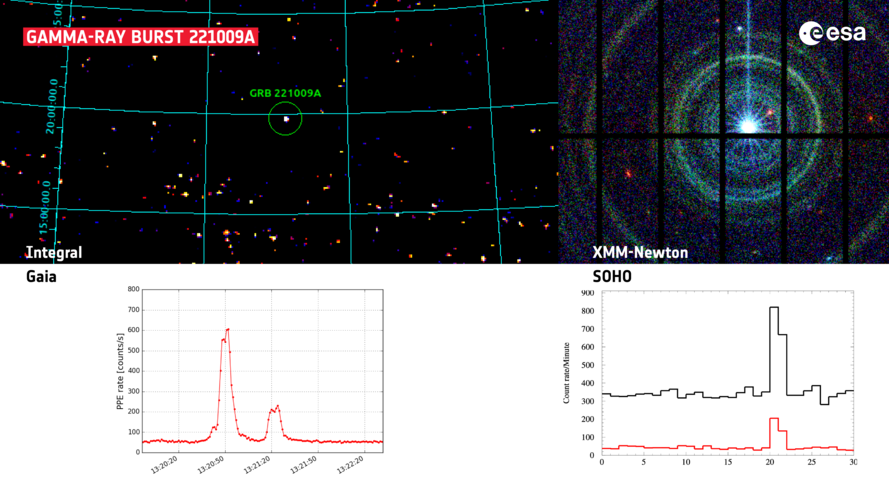 Image:
ESA spacecraft catch the brightest ever gamma-ray burst
Image:
ESA spacecraft catch the brightest ever gamma-ray burst 
